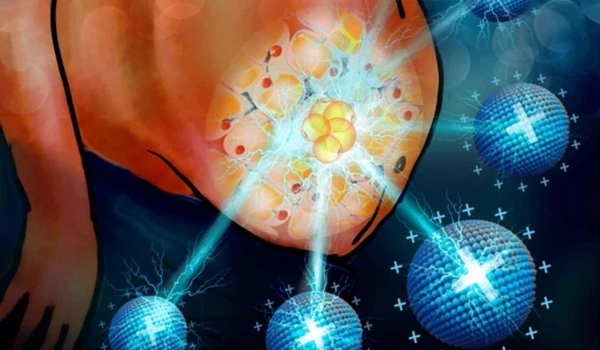There is growing evidence that subcutaneous fat, or fat that is stored just beneath the skin, may play a protective role for women’s brains. One recent study published in the journal “Menopause” found that higher levels of subcutaneous fat were associated with better cognitive function in postmenopausal women.
Females’ proclivity to deposit more fat in places like their hips, buttocks, and the backs of their arms, known as subcutaneous fat, is protective against brain inflammation, which can lead to problems like dementia and stroke, according to scientists, at least until menopause.
Males of virtually any age have a greater proclivity to deposit fat around the major organs in their abdominal cavity, a condition known as visceral adiposity, which is far more inflammatory. Furthermore, before females reach menopause, males are thought to be at a much higher risk for inflammation-related problems ranging from heart attack to stroke.
“When people think about protection in women, their first thought is estrogen,” says Alexis M. Stranahan, Ph.D., a neuroscientist at the Medical College of Georgia at Augusta University’s Department of Neuroscience and Regenerative Medicine. “However, we must move beyond the simplistic notion that every sex difference involves hormone differences and hormone exposure. We need to think more deeply about the underlying mechanisms of gender differences in order to treat them and recognize the role that gender plays in different clinical outcomes.”
When we removed subcutaneous fat from the equation, the female brains began to exhibit inflammation in the same way that male brains do, and the females gained more visceral fat. It kind of shunted everything toward that other storage location.
Alexis M. Stranahan
Diet and genetics are two other possible explanations for the estrogen-related differences, according to Stranahan, corresponding author of a study published in the American Diabetes Association journal Diabetes.
She admits that the findings are potentially heretical and revolutionary, and they certainly surprised her. “We conducted these experiments to determine, first and foremost, what occurs first, hormone disruption, inflammation, or brain changes.”
They looked at changes in the amount and location of fat tissue, as well as levels of sex hormones and brain inflammation in male and female mice at different time intervals as they grew fatter on a high-fat diet to learn more about how the brain becomes inflamed.
Since, much like with people, obese female mice tend to have more subcutaneous fat and less visceral fat than male mice, they reasoned that the distinctive fat patterns might be a key reason for the protection from inflammation the females enjoy before menopause.

They discovered distinct fat distribution patterns in males and females in response to a high-fat diet. They discovered no signs of brain inflammation or insulin resistance, both of which cause inflammation and can lead to diabetes, until the female mice reached menopause. Menstruation ceases around 48 weeks, and female fat positioning begins to shift slightly, becoming more like males.
They then compared the impact of a high-fat diet, which is known to increase inflammation throughout the body, in mice of both sexes following liposuction-like surgery to remove subcutaneous fat. They did not do anything that would directly interfere with normal estrogen levels, such as removing the ovaries. The subcutaneous fat loss increased brain inflammation in females without moving the dial on levels of their estrogen and other sex hormones.
Bottom line: The females’ brain inflammation looked much more like the males’, including increased levels of classic inflammation promoters like the signaling proteins IL-1β and TNF alpha in the brain, Stranahan and her colleagues report.
“When we removed subcutaneous fat from the equation, the female brains began to exhibit inflammation in the same way that male brains do, and the females gained more visceral fat,” Stranahan says. “It kind of shunted everything toward that other storage location.” The transition took about three months, which corresponds to several years in human time.
According to Stranahan, females who did not have subcutaneous fat removed but did eat a high-fat diet showed brain inflammation levels similar to males only after menopause. When mice on a low-fat diet had their subcutaneous fat removed at a young age, they developed a little more visceral fat and a little more inflammation in the fat. But Stranahan and her colleagues saw no evidence of inflammation in the brain.
Stranahan’s take-home message from the project: Don’t get liposuction and then eat a high-fat diet. Another point she makes is that BMI, which simply divides weight by height and is commonly used to indicate overweight, obesity, and an increased risk of a variety of diseases, is likely not a very useful tool. The waist to hip ratio is also an easy and more accurate indicator of metabolic risk and potentially brain health, she adds.
“We can’t just say obesity. We have to start talking about where the fat is. That is the critical element here,” Stranahan says. She notes that the new study looked specifically in the hippocampus and hypothalamus of the brain. The hypothalamus controls metabolism and exhibits changes with inflammation from obesity that help control conditions that develop bodywide as a result. The hippocampus, a center of learning and memory, is regulated by signals associated with those pathologies but doesn’t control them, Stranahan notes.
While these are good places to start, other areas of the brain may respond very differently, so she is already looking at the impact of subcutaneous fat loss in others. Stranahan also wants to better define what does explain female protection because her evidence suggests estrogen may not explain it. The obvious chromosomal differences between the XX female and the XY male are one of her suspects.
Stranahan has been researching the effects of obesity on the brain for several years and was among the first to demonstrate that visceral fat promotes brain inflammation in obese male mice while transplanting subcutaneous fat reduces brain inflammation. Females also have higher levels of proteins that can reduce inflammation. A high-fat diet has been shown to activate microglia, immune cells in the brain, in males but not females.
















